Under This Blog
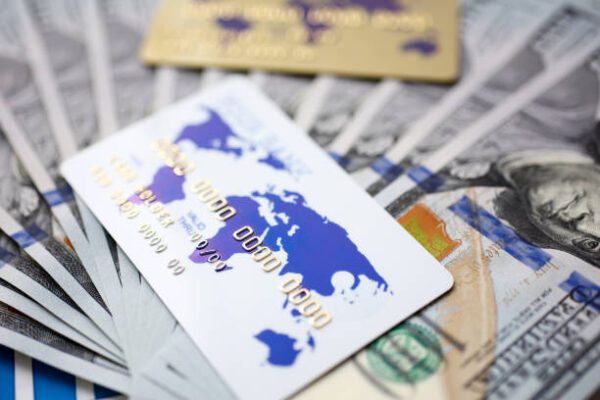
In today’s increasingly global lifestyle, international travel is no longer a rare luxury but a common pursuit—whether it’s for business, education, leisure, or digital nomadism. For Indian travelers, especially frequent flyers, managing foreign exchange and expenses efficiently is critical. With dynamic currency exchange rates, rising international transaction fees, and concerns over security, the need for a reliable travel financial tool has never been greater. This is where travel credit cards and forex cards step in as game changers.
Travel credit and forex cards are specially curated financial instruments that allow Indian travelers to spend internationally with ease, offering benefits like zero or low foreign transaction fees, airport lounge access, air miles, cashback on foreign spends, and travel insurance. They help in reducing the dependency on carrying large amounts of cash, thus adding convenience and safety during trips. While travel credit cards offer flexibility and various loyalty perks, forex cards give control over exchange rates and budgeting.
However, the choice between a travel credit card and a forex card isn’t always straightforward. It depends on several factors—how often you travel, your destination, spending habits, budget, and how comfortable you are with credit versus preloading funds. This blog dives into the best options in both categories for Indian travelers, analyzing their pros, cons, charges, benefits, and usability across the globe. Whether you’re a student heading abroad, a solo backpacker, or a corporate traveler, this guide will help you make an informed decision and avoid unnecessary travel expenses.
Let’s explore the top-performing cards that are not only accepted widely but also reward you generously every time you swipe internationally.
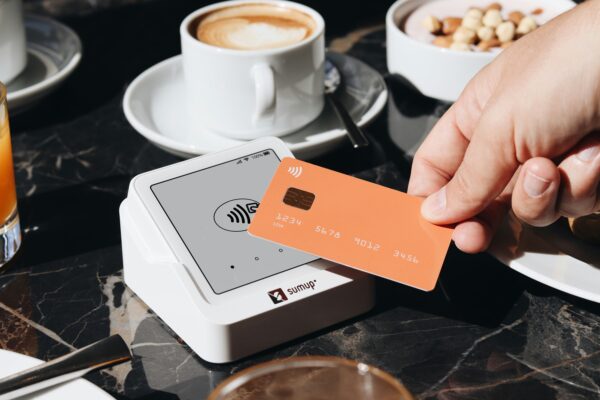
What are Travel Credit & Forex Cards and Why They Matter?
Travel credit and forex cards have emerged as essential financial tools for international travelers, especially those from India. Whether you’re a frequent flyer or planning your first overseas vacation, understanding these cards and their benefits can help you manage your expenses wisely while enjoying maximum value from your money.
Travel Credit Cards are international credit cards offered by various banks that are designed with travel-specific perks such as complimentary airport lounge access, low foreign exchange markups, reward points on international spends, travel insurance, and more. These cards are linked to your credit line, meaning the card issuer pays on your behalf initially, and you repay the amount later—typically within a 30-50 day interest-free period, depending on your billing cycle.
Forex Cards, on the other hand, are prepaid cards that can be loaded with foreign currencies before you travel. These cards work much like debit cards but are specially designed for overseas usage. They offer fixed exchange rates at the time of loading, which protects you from currency fluctuations and allows you to stick to a budget.
Why They Matter?
Cost-Efficiency: One of the biggest advantages of using travel credit or forex cards is the cost-saving potential. Using Indian debit or credit cards abroad often comes with hefty foreign currency conversion fees and dynamic currency conversion (DCC) charges. With a good travel card, you can save up to 3-5% on every transaction.
Security: Carrying cash abroad is risky. These cards offer secure alternatives with PIN protection, real-time transaction tracking via mobile apps, and the ability to block the card instantly in case of theft or loss.
Rewards and Benefits: Travel credit cards offer a slew of benefits like air miles, reward points, discounts on hotel bookings, car rentals, and even cashback on international spending. Forex cards, while not as benefit-heavy, often come with zero ATM withdrawal charges abroad and insurance coverage.
Fixed Exchange Rate (Forex Cards): If you’re worried about the fluctuating exchange rates, forex cards offer peace of mind by locking in the rate at the time of loading. This helps avoid budgeting surprises during your trip.
ATM Access and Convenience: Both card types are accepted widely, but forex cards are particularly useful in places where cash is king. You can withdraw money from local ATMs abroad without paying excessive fees.
Better Budget Control: Pre-loading forex cards forces you to work within a set limit, making them ideal for budget-conscious travelers or students going abroad.
In essence, travel credit and forex cards are more than just payment tools—they are travel companions that help optimize your spending, provide safety, and enhance your travel experience. In the sections that follow, we’ll explore the best options available in India, compare the two, and share expert tips on how to choose the right card for your specific travel style.
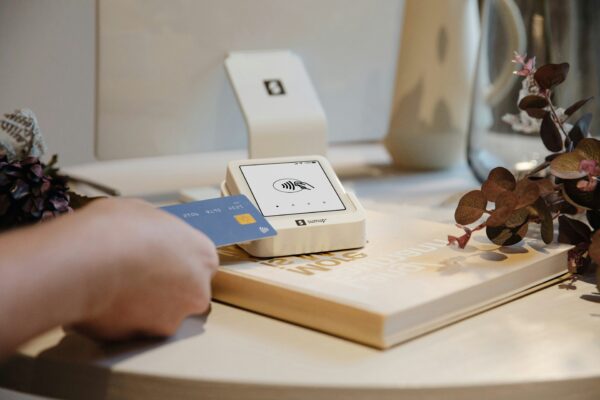
Top Travel Credit Cards for International Trips from India
Choosing the right travel credit card can significantly enhance your international travel experience—whether through savings, perks, or added conveniences. For Indian travelers, several banks offer feature-rich travel credit cards that cater to various needs such as lounge access, low foreign transaction fees, complimentary insurance, and even reward programs that convert to air miles. Below are some of the top-rated travel credit cards in India for international trips, with a deep dive into their benefits, use cases, and value.
1. HDFC Bank Regalia Credit Card
Why It’s Great for Travelers:
One of the most popular premium credit cards in India, the HDFC Regalia is packed with travel-centric features. It offers complimentary international and domestic airport lounge access, which is ideal for frequent flyers. You also get travel insurance, concierge services, and a decent reward-to-mile conversion program.
Key Benefits:
6 complimentary international lounge visits annually via Priority Pass.
Complimentary air accident insurance of ₹1 crore.
Foreign currency markup fee of 2%, lower than the standard 3.5%.
Reward points can be redeemed for flight bookings or converted to air miles.
Who Should Get It: Frequent flyers looking for a card that offers good travel insurance and lounge access with relatively low forex fees.
2. Axis Bank Atlas Credit Card
Why It’s Great for Travelers:
This card is specially designed for travelers. It allows you to earn EDGE Miles on every spend, which can be redeemed across more than 10+ airline and hotel partners. It offers one of the best reward redemption ratios for travelers.
Key Benefits:
Up to 8 EDGE Miles per ₹200 spent.
Low foreign currency markup of 2%.
Complimentary domestic and international lounge access.
Milestone benefits like free hotel stays, flight vouchers, and annual fee waiver.
Who Should Get It: International leisure or business travelers who frequently book flights and hotels using cards.
3. American Express Platinum Travel Credit Card
Why It’s Great for Travelers:
Amex is known for its exceptional customer service and global reach. This card offers extensive rewards and travel benefits, including complimentary Taj stays and high conversion value for reward points.
Key Benefits:
Earn 1 Membership Reward Point per ₹50 spent.
Bonus points worth ₹9,000 on spending ₹4 lakh annually.
Travel vouchers and Taj hotel benefits.
Global acceptance and premium concierge services.
Who Should Get It: Luxury travelers who value high-end travel experiences and concierge services.
4. SBI Card ELITE
Why It’s Great for Travelers:
The SBI ELITE card offers premium travel benefits along with entertainment perks like free movie tickets. It comes with Club Vistara and Trident Privilege memberships.
Key Benefits:
Complimentary domestic & international airport lounge access.
Club Vistara Silver tier membership.
Trident Privilege Red Tier Membership.
Low forex markup fee of 1.99%.
Who Should Get It: Frequent domestic and international travelers who fly Vistara or stay at Trident Hotels.
5. ICICI Bank Sapphiro Credit Card
Why It’s Great for Travelers:
The Sapphiro is a dual-bonus card that offers benefits on both American Express and Visa networks. It provides excellent value on travel, wellness, and lifestyle spending.
Key Benefits:
4 complimentary international lounge visits via DreamFolks.
Personal air accident insurance cover of ₹3 crore.
Dining, movie, and wellness benefits.
1.5% forex markup fee.
Who Should Get It: Travelers who want a mix of travel perks and lifestyle benefits, all under a single card.
What to Look for When Choosing a Travel Credit Card
Low Forex Markup Fees: Prefer cards with a 1.5%–2% forex markup to save on international spends.
Lounge Access: Choose cards that offer Priority Pass or DreamFolks membership for free lounge visits.
Reward Conversion: Look for cards that offer air miles conversion or travel booking portals.
Travel Insurance: Cards with built-in insurance protect you from medical emergencies and trip cancellations.
Spending Thresholds: Some cards offer better perks after meeting specific annual spending targets.
In summary, the best travel credit card for you depends on your travel frequency, airline/hotel preferences, and spending patterns. Premium cards may have higher annual fees, but the rewards, cashback, insurance, and access they offer often outweigh the cost. Up next, we’ll look at the Top Forex Cards for Hassle-Free Global Spending to help you decide whether a prepaid card may be more suitable for your needs.
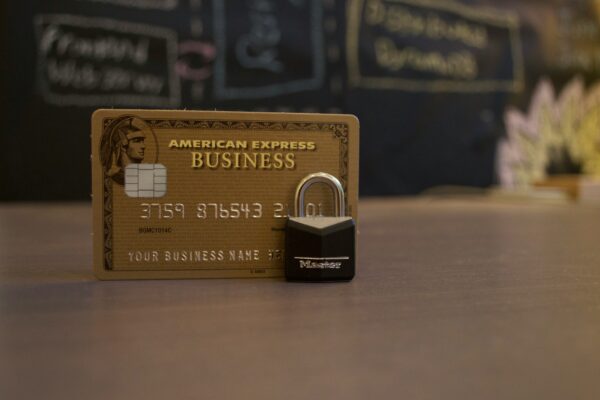
Top Forex Cards for Hassle-Free Global Spending
Forex cards, also known as prepaid travel cards, are an essential tool for any international traveler. Unlike credit cards that charge foreign transaction fees, forex cards are loaded with a fixed amount in foreign currency before your trip, allowing you to spend with zero or minimal conversion charges. These cards are issued by major banks and financial institutions in India and are widely accepted across the globe.
They offer security, ease of budgeting, and excellent exchange rates, making them a great companion for your international travels. Below are some of the best forex cards for Indian travelers, with a detailed explanation of their features, use cases, and unique benefits.
1. Niyo Global Card by SBM
Why It’s Popular:
Niyo Global has become a favorite among young travelers and students due to its zero forex markup and modern digital interface. The card is linked with the Niyo app that offers real-time insights, easy fund loading, and support.
Key Benefits:
Zero forex markup on international spends.
Real-time currency conversion updates via the app.
ATM withdrawals globally with low charges.
No annual fees or issuance charges.
Powered by VISA and accepted in 150+ countries.
Who Should Get It: Budget-conscious travelers, students studying abroad, and digital-savvy users who want zero forex charges and easy tracking.
2. BookMyForex YES Bank Forex Card
Why It’s Popular:
BookMyForex is India’s first marketplace for currency exchange, and its forex card—issued in partnership with YES Bank—offers some of the best rates in the market. It supports multiple currencies and is fully reloadable.
Key Benefits:
Lock-in best rates while loading the card.
Supports 14 currencies on a single card.
Zero issuance fee when ordered online.
24/7 emergency assistance for lost or stolen cards.
Free insurance and fraud protection.
Who Should Get It: Travelers looking for real-time forex rates, multi-currency options, and protection benefits.
3. HDFC Multi-Currency ForexPlus Card
Why It’s Popular:
HDFC Bank offers one of the most reliable and widely accepted forex cards in India. This card supports over 20 currencies and comes with chip-based security for added safety.
Key Benefits:
Load up to 23 currencies.
Enhanced security with chip and PIN protection.
Balance check, reload, and PIN generation via mobile app.
Global acceptance at over 2 million ATMs and POS terminals.
Lost card liability insurance.
Who Should Get It: Frequent flyers traveling to multiple destinations who want security and flexibility.
4. Axis Bank Multi-Currency Forex Card
Why It’s Popular:
This card is specifically designed for travelers visiting multiple countries. It lets you load up to 16 currencies and automatically deducts funds in the appropriate currency to avoid conversion fees.
Key Benefits:
16 currency support, with dynamic currency prioritization.
Emergency assistance including cash delivery and card replacement.
Free insurance cover worth up to ₹3 lakhs.
Zero cross-currency charges if the transaction matches loaded currency.
Who Should Get It: Business travelers and international tourists with multi-country itineraries.
5. ICICI Bank Travel Card
Why It’s Popular:
ICICI Bank’s travel card offers comprehensive benefits with the trust of one of India’s leading banks. The card is reloadable, trackable via mobile banking, and offers good insurance coverage.
Key Benefits:
Can be loaded in 15 global currencies.
Free replacement in case of loss.
SMS/email alerts for every transaction.
Worldwide acceptance at over 30 million merchant establishments.
Emergency travel assistance through partner networks.
Who Should Get It: Occasional travelers and those who want backing from a major Indian bank.
Why Forex Cards Matter
Fixed Exchange Rate: Avoid fluctuating currency rates by locking in the forex rate while loading the card.
Low/No Fees: Many forex cards have zero issuance and low ATM withdrawal fees.
Safety: Most cards come with insurance and fraud protection, making them safer than carrying cash.
Easy Reload: Reload from anywhere via net banking or the card’s app.
Budget Control: You can pre-load only what you need, helping manage your spending abroad.
Forex cards are ideal for those who don’t want to risk paying high foreign transaction fees or currency fluctuation on credit cards. They are a reliable and secure tool for everyday spending, whether you’re shopping in Paris or paying for a cab in Dubai.
Next up, we’ll explore a detailed comparison between travel credit cards and forex cards, helping you understand which one suits your travel style better.
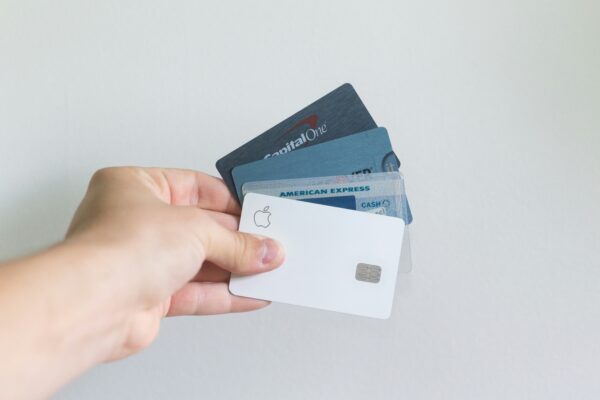
Travel Credit Cards vs. Forex Cards – Which One Should You Choose?
When preparing for international travel, one of the most common questions among Indian travelers is whether to carry a travel credit card or a forex card. Both are highly useful tools that reduce your dependence on cash and offer greater security while spending abroad. However, they differ significantly in functionality, cost, convenience, and benefits. Understanding these differences can help you choose the right card based on your travel needs and lifestyle.
🔍 Understanding the Core Differences
Let’s break down the key distinctions between the two card types, so you can make an informed decision:
Currency and Conversion:
A travel credit card operates in Indian Rupees (INR), and the conversion to the foreign currency takes place at the time of transaction, based on the prevailing exchange rate plus a markup. A forex card, on the other hand, is preloaded with a specific foreign currency such as USD, EUR, GBP, or AED. The exchange rate is fixed at the time of loading, protecting you from future currency fluctuations.Exchange Rate Transparency:
Travel credit cards usually come with a forex markup fee ranging between 1.75% to 3.5% per transaction, depending on the card issuer. This means your total bill will include not just the converted amount, but also a fee on top of it. In contrast, most forex cards offer a locked-in rate at the time of loading and often charge zero or minimal fees for foreign transactions.Spending Limits and Control:
With travel credit cards, you get access to your credit limit, which may range from ₹50,000 to several lakhs depending on your profile. This offers flexibility and is great for emergencies or large purchases. Forex cards, being prepaid, only allow you to spend the amount loaded. This encourages budgeting and prevents overspending, making them suitable for students or first-time travelers.Reward and Cashback Benefits:
One area where travel credit cards shine is in the rewards department. They often come with benefits such as air miles, cashback, travel points, or discounts on international spends. Some cards even offer free hotel stays, travel insurance, or dining discounts abroad. Forex cards generally don’t provide these types of rewards, focusing more on low-cost usability.Lounge Access and Travel Perks:
Premium travel credit cards usually include complimentary access to international airport lounges, free travel insurance, concierge services, and other luxury travel perks. Forex cards, while excellent for transactions, rarely offer such benefits.ATM Withdrawals Abroad:
Withdrawing money from ATMs using a travel credit card usually attracts high interest and additional fees. Forex cards offer a more economical option for ATM withdrawals overseas, with minimal or no charges depending on the issuing bank or provider.Reloading and Acceptance:
Forex cards can be easily reloaded online via banking apps if you run low on funds. They’re accepted widely across merchants and ATMs, although in some places credit cards might have broader acceptance. Travel credit cards are accepted worldwide wherever Visa, MasterCard, or Amex are used, making them more universally dependable in emergencies.
📌 Which One Should You Choose?
If you are someone who values control over spending, stable exchange rates, and is traveling on a fixed budget, a forex card might be the ideal solution. It’s especially suitable for students, families, or anyone looking to avoid currency fluctuations.
On the other hand, if you’re a frequent traveler, prefer premium benefits, or want emergency backup and greater spending power, then a travel credit card would serve you better. It also provides peace of mind, as many credit cards come with fraud protection, concierge services, and travel-related insurance.
🔄 Why Not Use Both?
Savvy travelers often carry both cards to get the best of both worlds. You can use the forex card for day-to-day expenses like meals, shopping, and transport, while reserving the travel credit card for flight bookings, hotel stays, or emergency situations. This also allows you to balance out reward benefits and low-cost transactions.
In the end, the best card is the one that fits your travel pattern and financial comfort. The next section will help you choose the right card tailored to your travel goals, budget, and destination.
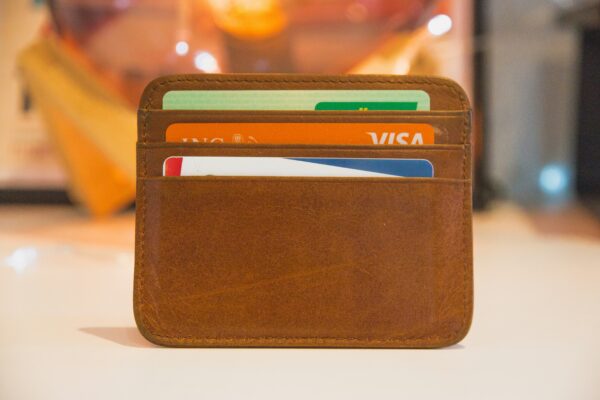
How to Choose the Right Card Based on Your Travel Needs
With the travel landscape evolving and global spending becoming easier, choosing the right travel card can significantly influence your overall travel experience. However, there’s no one-size-fits-all solution. The best travel card—be it a credit or forex card—depends on your travel style, destination, duration, budget, and personal preferences. Here’s a detailed guide on how to select the right card based on your specific travel needs.
🌍 1. Type of Traveler You Are
Frequent Traveler (Business or Luxury):
If you travel abroad multiple times a year, a travel credit card is often the best choice. These cards offer loyalty points, air miles, cashback, and complimentary travel benefits such as airport lounge access, concierge services, and international travel insurance. Look for cards like HDFC Infinia, Axis Reserve, or American Express Platinum Travel, which reward frequent usage and offer luxury perks.Budget or Family Traveler:
Those traveling on a strict budget or with family may prefer forex cards for their controlled spending environment. You load a specific currency amount, thus avoiding overspending and managing expenses better. Cards from Niyo Global, ICICI Travel Card, or HDFC Multicurrency Forex Card work well in this case.Student Traveler:
For international students or education-related travel, forex cards are a great option. They’re reloadable, secure, and help in maintaining currency-specific budgets. Look for features like low ATM withdrawal fees, easy online reloads, and multicurrency support.
🌐 2. Destination and Currency Consideration
If you’re traveling to a country where INR conversion rates fluctuate heavily, like Europe or the UK, locking your exchange rate in advance with a forex card will save you money.
For multi-country trips, consider a multi-currency forex card, such as those offered by HDFC or Axis Bank, which support up to 20 different currencies.
In contrast, credit cards are ideal for countries where digital payments are universally accepted and where your travel card network (Visa/Mastercard/Amex) is widely recognized.
💳 3. Benefits You Want
If you’re after lifestyle rewards like air miles, travel discounts, or cashback, a travel credit card wins hands down.
However, if you want zero forex markup, low loading charges, and no annual fees, then a forex card is more suitable.
Some cards now combine the benefits of both—zero markup travel credit cards like Niyo Global Credit Card or BookMyForex Cards, offering flexibility along with cost efficiency.
💼 4. Emergency Preparedness
In emergencies abroad—like medical needs, extended stays, or hotel hold amounts—credit cards provide a higher credit limit and wider acceptance, especially in remote or developed countries. Forex cards, while helpful for daily spends, may fall short in such scenarios.
Also, travel credit cards come with purchase protection, fraud detection, and emergency cash disbursement, which can be lifesavers when you’re stuck overseas.
📲 5. Ease of Use & Management
If you value convenience, mobile app integration, instant transaction alerts, and easy reload options, you should prioritize providers who offer top-notch app experiences.
Niyo Global, Wise, and Revolut have gained popularity among Indian travelers due to their clean interfaces and real-time spending features.
ICICI and Axis Bank offer powerful bank-backed apps for managing forex cards efficiently.
🧠 Final Tips to Make the Right Choice:
Compare total costs: Don’t just look at rewards; consider joining fees, annual fees, forex markup, ATM withdrawal charges, and hidden conditions.
Check acceptance: Research if your card network (Visa/Mastercard) is accepted in your destination.
Read the fine print: Ensure your card covers features like international insurance, fraud protection, and emergency assistance.
Use both if needed: Carry both a travel credit card for flexibility and a forex card for daily budgeting. It’s safer and smarter.
In conclusion, the ideal card is the one that fits your trip type and financial comfort. Spend time evaluating your needs, destination, and benefits to get the most value. Up next, we’ll look at how to maximize your benefits and avoid those sneaky charges that often catch travelers off guard.
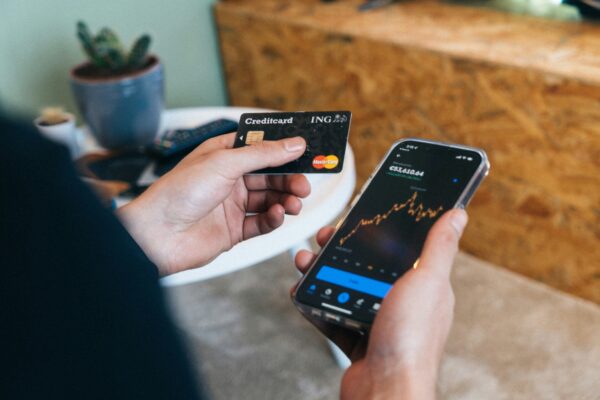
Tips to Maximize Benefits and Avoid Hidden Charges
Choosing the right travel credit or forex card is only half the game. To truly make the most of your international travel experience, you need to understand how to use these cards smartly, avoid hidden fees, and leverage all available perks. Whether you’re backpacking across Europe, heading on a luxury vacation, or flying for business, these expert-backed tips will help you save money, avoid pitfalls, and get the most out of your card.
💸 1. Understand the Fee Structure Thoroughly
Many travelers fall prey to hidden charges that could easily be avoided with some research:
Credit Cards may come with:
Foreign Transaction Fees (1%–3.5%): Always look for “zero forex markup” cards if you plan to swipe abroad frequently.
Cash Advance Fees: Withdrawing cash using a credit card is expensive and should be avoided unless absolutely necessary.
Late Payment Penalties: These charges can compound quickly overseas if you forget to pay your bill on time.
Forex Cards may have:
Reloading Charges (up to ₹100–300 per reload depending on the provider).
ATM Withdrawal Fees: Typically range from $2–$4 per transaction.
Inactivity Charges: Some cards impose monthly penalties if unused for long periods.
Tip: Compare all charges before choosing the card. Ask your provider for a detailed fee chart.
🧾 2. Monitor Exchange Rates and Lock In When Advantageous
For forex cards, you can lock in the exchange rate at the time of loading the card. This is particularly useful during volatile market conditions. You might save a considerable amount if you reload during favorable currency periods before your trip.
Apps like XE Currency, Google Finance, or even card provider apps like Niyo Global show real-time forex rates.
🧳 3. Know Your Card’s Travel Benefits and Use Them
A lot of cardholders miss out on built-in travel benefits simply because they don’t know about them.
Here are some commonly ignored benefits:
Complimentary Airport Lounge Access (via Priority Pass or Dreamfolks)
Free International Travel Insurance
Concierge Service
Lost Baggage or Flight Delay Insurance
Global Emergency Card Replacement
Tip: Before traveling, download your card’s T&C or benefits brochure. Highlight perks you can use and make a note of contact numbers for global support.
💳 4. Avoid DCC (Dynamic Currency Conversion) While Swiping
When shopping or dining abroad, the card machine may ask: “Do you want to pay in INR or local currency?”
Always choose the local currency (e.g., USD, EUR, GBP), because opting for INR triggers Dynamic Currency Conversion, where merchants decide the exchange rate, often adding 5%–7% hidden charges on top.
📲 5. Use Mobile Apps for Real-Time Tracking and Reloading
Modern forex and travel cards come with easy-to-use apps that help you:
Track your spending in real-time.
Reload your card in a few clicks.
Freeze/unfreeze the card instantly if lost.
Get instant customer support via chat.
Examples: Wise, Revolut, Niyo Global, BookMyForex, HDFC ForexPlus App.
Using the app also helps in maintaining daily budgets—a powerful way to ensure you don’t overspend during your trip.
🏦 6. Carry a Backup Card
Always carry a second card—either a backup forex card or travel credit card from a different network (Visa and Mastercard) in case your primary one is lost, blocked, or not accepted in certain countries.
Tip: Don’t keep both cards in the same wallet to avoid losing them together.
✅ 7. Activate and Notify Before You Travel
Inform your bank about your travel dates and countries. Some banks block foreign transactions unless pre-authorized.
Enable international usage via net banking or the app before departure.
Test your card with a small online international transaction to ensure it’s working.
📉 8. Avoid ATM Withdrawals on Credit Cards
Using your credit card to withdraw foreign cash is the most expensive option. Apart from high interest and fees, the interest is charged from day one without a grace period.
Use forex cards for ATM withdrawals if needed—they come with relatively lower fixed fees and no interest.
🧠 Final Pro Tips:
Never reload a forex card abroad via local transfers—it’s not allowed.
Check if your card supports tap-to-pay globally. It makes transactions quicker and safer.
Avoid letting hotels or car rentals “block” large amounts on your credit card. It affects your available credit limit.
In conclusion, a great travel card can elevate your trip from good to exceptional. But using it wisely is the key. Follow these tips, stay alert to fee traps, and you’ll not only save big but also enjoy all the luxury and peace of mind that comes with modern travel finance tools.
Frequently Asked Questions
1. Which is better for international travel – a travel credit card or a forex card?
Travel credit cards are great for rewards, lounge access, and global acceptance. Forex cards are better for budgeting and avoiding currency fluctuations. Choose based on your travel habits and spending preferences.
2. What is a zero forex markup credit card?
A zero forex markup card doesn’t charge extra for currency conversion when you spend abroad, helping you save 3%–5% on each international transaction.
3. Can I use my Indian debit card abroad instead of a forex card?
Yes, but it’s not recommended. Indian debit cards usually attract high conversion fees and lower security. Forex cards are safer and more cost-effective for international travel.
4. How many currencies can I load on a single forex card?
Most multi-currency forex cards allow you to load 10–20 global currencies. Single-currency cards are also available, but they’re more suitable for short trips to one country.
5. What happens if I lose my forex or travel card abroad?
Contact customer care immediately to block the card. Most issuers offer emergency replacement or cash assistance services in major countries.
6. Are ATM withdrawals with forex cards free while traveling?
No, ATM withdrawals using forex cards usually come with a flat withdrawal fee (e.g., $2–$4 per transaction). It’s best to withdraw in fewer, larger amounts.
7. Can I reload my forex card while I’m still abroad?
Yes, you can reload your forex card online through your provider’s app or website using Indian banking options. However, your KYC should be completed in advance.
8. Do forex cards expire? What happens to leftover balance?
Yes, most cards have a 3–5 year validity. You can either encash the leftover amount after returning to India or reuse the card on your next trip.
9. Is it safe to pay in INR abroad when offered on card machines?
No. Always choose to pay in the local currency to avoid Dynamic Currency Conversion (DCC), which adds unnecessary charges to your transaction.
10. Can I earn rewards or cashback using forex cards like I do with credit cards?
Most forex cards don’t offer reward points or cashback. If rewards are important to you, go for travel-focused credit cards instead.



